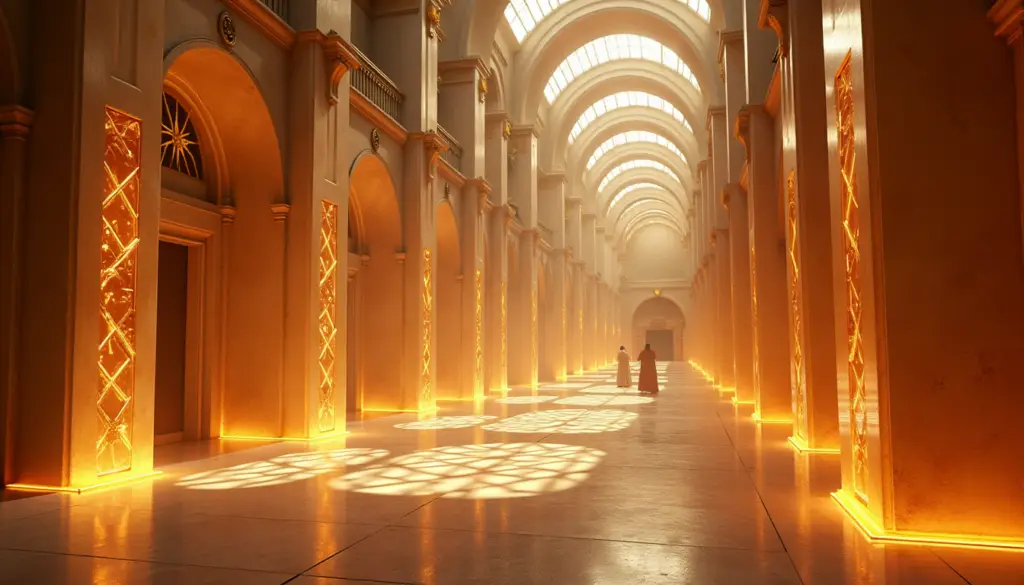How Academy Organizational Structures Shape Behavioral Control
You know those moments when you enter an impressive corporate headquarters and instantly feel the organizational culture? The soaring atrium may convey transparency, while the maze-like corridors imply complexity and control. Let me take you on an intriguing tour of the Academy, as its architecture reveals something profound about how we construct our organizations. In my new book ‘The Convergence: Broken Magic,’ I explore this magical institution in more depth, and here we’ll examine academy organizational structures through a lens that shows us important lessons about our own workplace designs.
The Seven Towers rise against the sky like declarations of intent. Each one is carefully designed to house different magical disciplines and keep them separate. They remind me of organizations that create elaborate structures to maintain divisions between departments, convinced that separation equals control.
Let’s start with the Theory Tower. Its crystalline walls seem transparent, but they actually filter what students can see. Knowledge is carefully portioned out, each level revealing only what the Federation deems appropriate. Does this sound familiar? I’ve seen this in organizations where information flow is strictly regulated, where even transparency becomes a tool of control. These distinct academy organizational structures create physical boundaries that mirror how traditional organizations separate departments, convinced that such division equals control.

The Practice Tower next door features specialized chambers for practicing magical skills. But here’s what’s fascinating: these chambers are designed to prevent any accidental mixing of different types of magic. It’s similar to those corporate structures we create to keep departments from “interfering” with one another. We’re so focused on avoiding mistakes that we might actually be hindering natural innovation. This element of the academy organizational structures demonstrates how physical separation can prevent the cross-pollination of ideas that drives innovation in modern workplaces.
History Tower houses the official records, meticulously curated to support current policies. Throughout my years of leadership, I’ve observed how organizations similarly shape their institutional memory. Some narratives are emphasized, while others quietly disappear from official accounts. However, just as in the Academy, those overlooked stories tend to resurface when change becomes essential.
The Defense Tower might be the most obvious metaphor for organizational control. Its walls are reinforced with magical barriers, and its windows are designed to detect threats. But what happens when our defensive structures become so robust that they block necessary adaptation? I’ve watched organizations build such strong protective systems that they can’t respond to changing circumstances. Each tower in the academy organizational structures serves not just as a physical building, but as a manifestation of hierarchical control principles we often reproduce in our own organizations.
Creation Tower captivates me because it symbolizes controlled innovation. Students can experiment, but only within well-defined boundaries. It brings to mind those innovation labs we set up in organizations—impressive in theory but often limited by endless rules and approval processes that stifle genuine creativity.
The Control Tower serves as the Academy’s administrative center, overseeing and managing all activities. Its architecture emphasizes authority, featuring clear sightlines and magical supervision systems. How many of our organizational structures similarly prioritize oversight over empowerment? Perhaps the most revealing aspect of the academy organizational structures is found in the spaces designed for integration rather than separation.
But it’s the Unity Tower that tells the most important story. Standing silent since the Sundering, its darkened windows serve as a constant reminder of what was lost when the Federation chose control over natural harmony. Students still whisper about what occurred in those halls, where magical unity was studied and celebrated before artificial separation was imposed. In organizations, we often have similar spaces where the potential for natural collaboration lies dormant because our control systems don’t know how to manage them. Just as the Unity Tower waits to be awakened, these organizational possibilities remain untapped until we find the courage to trust in natural connection again.
The spaces between the towers are important as well. Courtyards and walkways are designed to keep different types of magic users apart. The Federation calls this maintaining order. However, notice how people actually navigate these areas. They find ways to connect, much like employees who establish informal networks despite organizational barriers. The academy organizational structures extend beyond the towers themselves. Courtyards and walkways are strategically designed to regulate interaction between different magical disciplines, much like how organizational charts dictate who reports to whom.
Let’s discuss the classrooms, as their design is particularly clever. Each one features specific magical dampeners to prevent unauthorized magical mixing. In leadership terms, it’s like those strict processes we implement to ensure everyone stays in their lane. However, just as Academy students sometimes experience spontaneous magical connections despite these dampeners, employees find ways to collaborate across artificial boundaries.
The Archive levels below tell another story entirely. Maze-like corridors protect centuries of knowledge, but they also hide evidence of what magic looked like before all this control was put in place. Every organization has similar archives, places where the truth about our past practices sits quietly, waiting to be rediscovered.
You might wonder about the magical architecture itself. Those crystalline spires aren’t merely for show. They’re part of an elaborate system for channeling and controlling magical energy. What’s fascinating is that the more intricate these control systems become, the more energy they require to operate. Just like in our organizations, where complex control structures use resources that could be allocated for actual productive work.
The human cost is also worth considering. Academy staff expend significant energy maintaining these architectural control systems. They may become so focused on preventing unauthorized magical mixing that they overlook signs of positive transformation. How many of our organizational systems similarly drain our people with compliance requirements?
But there’s hope in how people truly use these spaces. Students discover quiet corners where various kinds of magic naturally harmonize. Staff members establish unofficial meeting spots where strict protocols ease. The architecture of control can influence behavior, but it can’t fully stop natural collaboration.
What can we learn from the Academy’s architecture? First, it shows that no matter how elegant, control systems require constant energy to maintain. Second, people will find ways to work around artificial barriers when those barriers hinder natural cooperation. Third, our most impressive organizational structures sometimes work against our true goals. What can we learn from studying the academy organizational structures? First, they show that no matter how elegant, control-focused organizational designs require constant energy to maintain.
Consider your organizational framework—not just the physical space but all the systems you’ve established to maintain control. Are they genuinely supporting your mission, or are they draining energy that could be better utilized elsewhere? Are they preventing issues or hindering natural solutions from surfacing?
The Academy’s architecture is magnificent, but it also serves as a warning. When we construct buildings focused primarily on control, we may be generating the very problems we aim to prevent. True organizational strength does not arise from enforced separation; it emerges from creating spaces where natural collaboration can thrive.
Next time you walk through your organization, try to see it through this lens. Look for your own sealed towers, your artificial separations, and how academy organizational structures might be creating the very problems they aim to solve. Then ask yourself: What could happen if we created spaces that relied on natural harmony instead of enforcing rigid divisions?
After all, the most potent architecture might be the kind that supports connection rather than control.
Author’s Note: This exploration of the Academy’s architecture draws on detailed world-building notes and years of organizational leadership experience. The parallels between magical control systems and organizational structures emerged naturally during the writing process, offering insights into how we might build better organizations in our own worlds.






